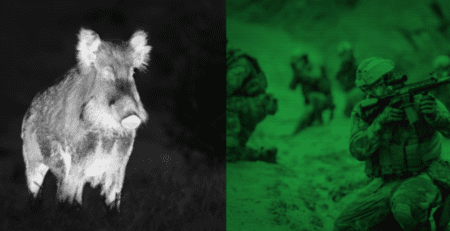Thermal for Marine Applications
In the realm of maritime operations, where visibility is often compromised by darkness, fog, or adverse weather conditions, having reliable technology is paramount for safety and efficiency. One such technology that has revolutionised marine operations is thermal imaging. Utilising infrared radiation to create images based on heat signatures, thermal imaging offers a range of benefits that make it invaluable for various marine applications. In this article, we will explore some of the benefits.
1 . Enhanced Night Vision
One of the primary advantages of thermal imaging in marine settings is its ability to provide enhanced night vision capabilities. Traditional vision systems struggle in low-light conditions, limiting visibility and increasing the risk of accidents. However, thermal cameras can detect heat emitted by objects, allowing operators to navigate safely even in complete darkness. This capability is particularly crucial for vessels navigating through unlit waters or operating during nighttime.
2. Improved Search & Rescue
Search and rescue operations in marine environments can be challenging, especially when individuals or objects are adrift at sea. Thermal imaging technology significantly enhances these efforts by enabling rescuers to detect heat signatures emitted by survivors or distressed vessels. Unlike visible light, which may be obstructed by fog, smoke, or waves, thermal imaging penetrates these obstacles, increasing the chances of locating and rescuing individuals in distress swiftly.
3. Detection of Obstacles & Hazards
Navigating through waterways with obstacles such as floating debris or submerged rocks poses risks to maritime vessels. Thermal imaging aids in the detection of these obstacles by highlighting temperature differentials between the objects and the surrounding water. This early detection allows for timely evasive manoeuvres, minimising the likelihood of collisions or damage to the vessel.
4. Identification of Vessel Anomalies
Monitoring the mechanical systems and structural integrity of marine vessels is crucial for preventing malfunctions or failures that could compromise safety. Thermal imaging can help to identify anomalies such as overheating components, leaks, or structural weaknesses by detecting variations in temperature. By promptly identifying these issues, maintenance crews can address them proactively, reducing the risk of costly breakdowns or accidents while at sea.
5. Environmental Monitoring & Conservation
Thermal imaging technology also plays a crucial role in monitoring the environment and conserving marine ecosystems. It enables researchers and conservationists to survey wildlife populations, detect illegal fishing activities, and monitor changes in sea surface temperatures. Additionally, thermal imaging can aid in identifying and mitigating pollution incidents by detecting thermal anomalies indicative of oil spills or chemical discharges.
In summary, thermal imaging technology provides numerous advantages for marine applications. From boosting night vision capabilities to aiding in search and rescue missions, its capacity to detect heat signatures ensures safer navigation, early identification of obstacles, and proactive maintenance of vessel systems. Additionally, thermal imaging is pivotal in monitoring the environment and conserving marine ecosystems, promoting sustainability. As technology progresses, the incorporation of thermal imaging systems into maritime operations will likely increase, bolstering safety, efficiency, and environmental stewardship at sea.
Click Here to shop our top Thermal Monoculars and Binoculars for Marine Applications or contact one of our experts at sales@nightvision.com.auor call02 9283 4375 to find out more!








